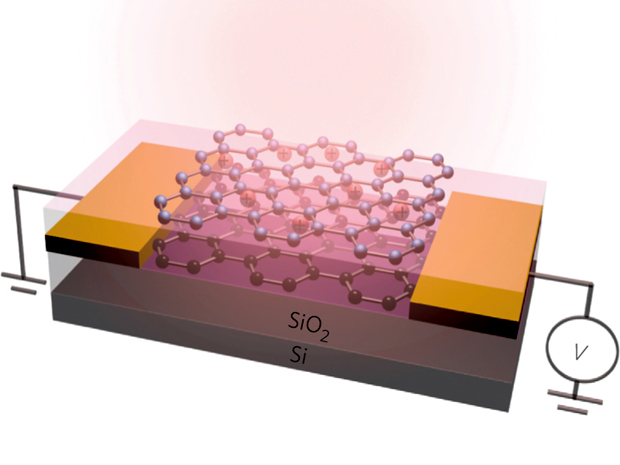Contact Lenses Can Now Provide Infrared Vision: Michigan University Research
It might sound like a scene from a James Bond movie, where the protagonist uses contact lenses that give a perfect heat vision for his mission! Well, researchers at Michigan University have proved that such heat vision technology can be put into contact lenses. This would allow a user to have infrared vision without the need to put on high-end goggles. Researchers used Graphene light detector which can sense the full infrared spectrum. Unlike the detectors already available, this detector doesn't need any bulky cooling equipment. The infrared vision is the best known for spotting people or animals in the dark. It also finds numerous applications for doctors during surgery and in other domains. Infrared imaging needs a combination of near- , mid- and far- infrared radiation at the same time to get a heat view.
Graphene, a single layer of Carbon, could sense infrared spectrum along with visible and ultraviolet light. The major issue till now was because of its inability to capture enough light to generate a detectable electrical signal. According to Zhaohui Zhong, an assistant professor in Michigan University, the challenge for Graphene-based detectors are because of their low sensitivity. It require hundred to thousand time high sensitivity that a commercial device would need.

Zhaohui Zhong, Ted Norris, Gerard A. Mourou worked with graduate students and amplified the signal by looking at how light-induced electrical charges in Graphene affect nearby current. To develop a device, an insulating sheet was kept in between the two layers with bottom one carrying current. The light after hitting the upper plate frees electrons and creates positively charged holes. A quantum mechanical trick then allowed these electrons to reach the lower layer of Graphene and positive holes at upper layer creates electric field. The electric field so created affects the current flow at the bottom layer. This change in current gives the brightness of light.
The device so created is first of its kind and is much smaller. Researchers are sure that if this device is integrated with the contact lenses or wearables, it would expand human vision from natural visible light to infrared light. So, be ready to answer question like-are you ready to see in infrared?
Source: #-Link-Snipped-# | #-Link-Snipped-#
Graphene, a single layer of Carbon, could sense infrared spectrum along with visible and ultraviolet light. The major issue till now was because of its inability to capture enough light to generate a detectable electrical signal. According to Zhaohui Zhong, an assistant professor in Michigan University, the challenge for Graphene-based detectors are because of their low sensitivity. It require hundred to thousand time high sensitivity that a commercial device would need.

Zhaohui Zhong, Ted Norris, Gerard A. Mourou worked with graduate students and amplified the signal by looking at how light-induced electrical charges in Graphene affect nearby current. To develop a device, an insulating sheet was kept in between the two layers with bottom one carrying current. The light after hitting the upper plate frees electrons and creates positively charged holes. A quantum mechanical trick then allowed these electrons to reach the lower layer of Graphene and positive holes at upper layer creates electric field. The electric field so created affects the current flow at the bottom layer. This change in current gives the brightness of light.
The device so created is first of its kind and is much smaller. Researchers are sure that if this device is integrated with the contact lenses or wearables, it would expand human vision from natural visible light to infrared light. So, be ready to answer question like-are you ready to see in infrared?
Source: #-Link-Snipped-# | #-Link-Snipped-#
0
